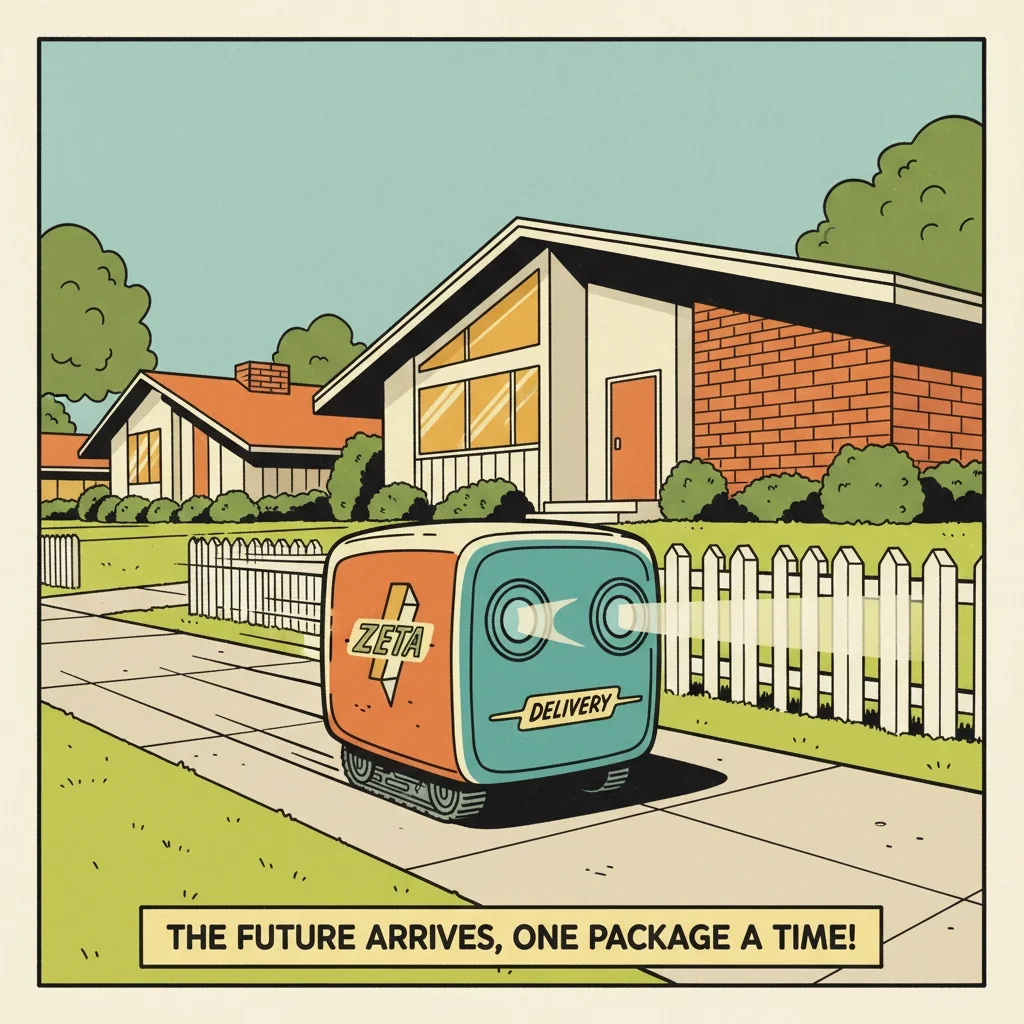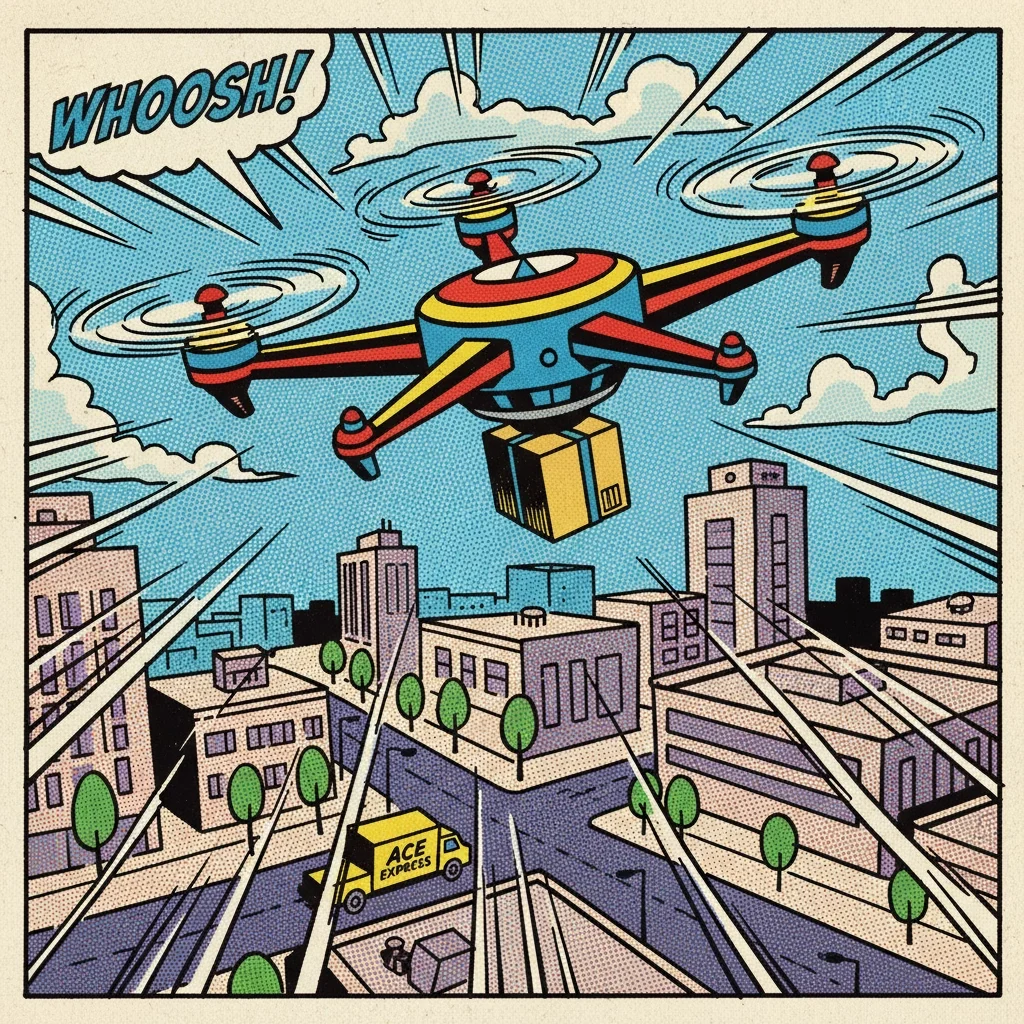Last-Mile Delivery Innovation: How Drones, Autonomous Vehicles, and Hybrid Solutions Are Changing eCommerce Fulfillment
The final mile of delivery: getting packages from distribution centers to customers' doorsteps: has always been the most expensive and complex part of the shipping process. But that's changing fast. Autonomous vehicles, drones, and hybrid delivery solutions are transforming how eCommerce brands think about fulfillment, promising lower costs, faster deliveries, and happier customers.
For growing eCommerce brands, understanding these innovations isn't just about staying current with tech trends: it's about preparing for a future where customer expectations will be shaped by same-day delivery via drone and autonomous vehicles handling routine shipments around the clock.
What Exactly Is Last-Mile Delivery?
Last-mile delivery is the final step in the fulfillment process: moving packages from the nearest distribution hub or warehouse to the customer's address. It's called the "last mile" whether the actual distance is one mile or twenty, and it's consistently the most expensive part of shipping.
Traditional last-mile delivery relies on human drivers navigating traffic, finding addresses, and dealing with missed deliveries. It accounts for roughly 53% of total shipping costs, which explains why Amazon, UPS, and other logistics giants are investing billions in automation technologies.
Why Last-Mile Innovation Matters for eCommerce Brands
Your customers' delivery expectations have skyrocketed. What felt fast five years ago: 3-5 business days: now feels slow compared to Amazon Prime's same-day delivery in major cities. But speed isn't the only factor driving innovation in last-mile delivery.
Cost pressure is intense. Every brand shipping direct-to-consumer knows that shipping costs can make or break profit margins. Traditional delivery methods are labor-intensive and inefficient, with drivers spending significant time in traffic and dealing with failed delivery attempts.
Customer experience is everything. A delayed or missed delivery can turn a loyal customer into a detractor faster than almost any other fulfillment failure. The brands that can promise: and deliver: faster, more reliable shipping gain a competitive advantage.
Sustainability matters more. Consumers increasingly choose brands that align with their environmental values. Traditional delivery vehicles contribute significantly to urban air pollution and carbon emissions, making cleaner alternatives more attractive to eco-conscious shoppers.
Autonomous Vehicles: The 24/7 Delivery Fleet
Autonomous vehicles in last-mile delivery range from small sidewalk robots to full-size self-driving vans. These vehicles use AI-powered navigation, advanced sensors, and real-time traffic data to optimize routes and deliver packages without human drivers.
Amazon's Scout robot is probably the most recognizable example: a cooler-sized robot that rolls along sidewalks and can navigate neighborhoods to drop packages at front doors. But the technology scales up to larger vehicles too, with companies like JD.com and FedEx testing self-driving delivery vans.
The operational advantages are significant:
Reduced labor costs: No drivers means no payroll, insurance, overtime, or HR management for delivery operations
24/7 availability: Autonomous vehicles can deliver around the clock, enabling overnight deliveries and reducing missed delivery attempts
Route optimization: AI systems can dynamically adjust routes based on real-time traffic, weather, and delivery priorities
Lower environmental impact: Many autonomous delivery vehicles are electric, reducing carbon emissions per delivery
The technology isn't science fiction anymore. Companies across industries are already deploying autonomous delivery solutions, from urban package delivery to medical supply transport.
Drones: Fast, Direct, and Traffic-Free
Drone delivery takes a completely different approach: bypassing ground traffic entirely by using airspace for direct point-to-point deliveries. For lightweight, time-sensitive shipments, drones can dramatically reduce delivery time and cost.
Amazon's drone delivery service can deliver packages up to five pounds in under an hour. Walmart has partnered with drone companies to deliver everything from groceries to prescription medications. The UK's National Health Service uses drones to transport medical supplies between hospitals and remote clinics.
Drones excel in specific scenarios:
Speed: No traffic delays means faster deliveries, especially for urgent items
Cost efficiency: Research shows drones can reduce delivery costs by up to 70% compared to traditional methods
Accessibility: Drones can reach remote locations where ground vehicles might struggle
Environmental benefits: Electric-powered drones produce minimal emissions per delivery
Current limitations include:
Payload restrictions: Most commercial drones can only carry small, lightweight packages
Weather sensitivity: Wind, rain, and snow can ground drone operations
Regulatory challenges: Airspace regulations are still evolving for commercial drone use
Battery life: Limited flight range restricts delivery distance from distribution centers
Hybrid Solutions: The Best of All Worlds
The most sophisticated approach combines multiple technologies strategically. Hybrid models might use autonomous ground vehicles for bulk deliveries to neighborhood hubs, then deploy drones for final delivery to individual addresses. Or they might use traditional trucks for heavy items while handling small, urgent packages via drone.
This approach maximizes the strengths of each technology while minimizing their weaknesses. Ground vehicles handle larger, heavier loads efficiently, while drones provide speed for small packages and access to difficult locations.
The Economics: Lower Costs and Faster Deliveries
The numbers behind last-mile innovation are compelling. The autonomous delivery market is projected to grow from $28.09 billion in 2025 to $228.74 billion by 2035: a compound annual growth rate of over 23%.
Cost savings come from several sources:
Labor reduction: Removing human drivers from routine deliveries eliminates the largest cost component
Operational efficiency: Automated vehicles don't need breaks, can work 24/7, and optimize routes better than humans
Reduced vehicle wear: Electric autonomous vehicles have lower maintenance costs than traditional delivery trucks
Fewer failed deliveries: Automated systems can coordinate delivery timing more precisely with customers
Speed improvements are equally dramatic:
Traffic avoidance: Drones and optimized autonomous routes bypass congestion
Continuous operation: 24/7 availability means deliveries can happen outside traditional business hours
Direct routing: Automated systems take more efficient paths without human error or preference
What This Means for Growing eCommerce Brands
As these technologies mature and scale, they'll reshape customer expectations for eCommerce fulfillment. Brands that understand and prepare for this shift will have competitive advantages over those that don't.
For direct-to-consumer brands, this means thinking beyond traditional shipping strategies. Instead of competing solely on product price or quality, delivery speed and reliability become major differentiators.
For subscription and repeat-purchase brands, automated delivery could enable new service models: like predictive shipping where autonomous vehicles deliver products before customers explicitly reorder them.
For brands in competitive markets, early adoption of innovative delivery methods could provide temporary competitive advantages while the technology is still novel.
How 3PLs Fit Into the Automated Future
As a boutique 3PL, Rogue Fulfillment is watching these developments closely. While we can't deploy our own drone fleet tomorrow, we're preparing for a future where automated last-mile delivery will integrate with traditional fulfillment operations.
The key insight is that automation doesn't eliminate the need for skilled fulfillment partners: it changes what good fulfillment looks like. Brands will still need partners who understand packaging, inventory management, and customer experience. But they'll also need partners who can integrate with new delivery technologies as they become available.
Our focus remains on providing the personal service and flexibility that growing brands need, while staying current with logistics innovations that can benefit our clients. As autonomous delivery becomes more accessible, we'll be ready to help brands take advantage of these new capabilities.
Preparing for the Automated Delivery Future
Last-mile delivery innovation isn't just a logistics trend: it's a fundamental shift in how eCommerce fulfillment works. Brands that understand these changes and plan accordingly will be better positioned to meet future customer expectations and control shipping costs.
The transition won't happen overnight, but it's happening faster than many people expect. Companies like Amazon, Walmart, and UPS aren't investing billions in autonomous delivery technology for fun: they're preparing for a future where automated fulfillment becomes the competitive standard.
For growing eCommerce brands, the message is clear: pay attention to these innovations, understand how they might affect your customers' expectations, and work with fulfillment partners who are thinking ahead about how to integrate new technologies as they become available.
The last mile of delivery is becoming the first mile of a new era in eCommerce fulfillment.



